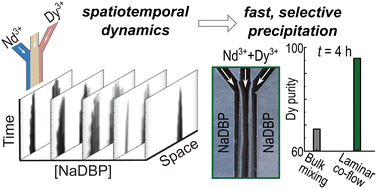2024-04-23 ノースカロライナ州立大学(NCState)
<関連情報>
- https://news.ncsu.edu/2024/04/sunny-day-flooding-and-bacteria/
- https://agupubs.onlinelibrary.wiley.com/doi/10.1029/2024GH001020
潮汐によるパイプネットワークへの浸水による冠水および沿岸水路の糞便性細菌汚染 Fecal Bacteria Contamination of Floodwaters and a Coastal Waterway From Tidally-Driven Stormwater Network Inundation
M. M. Carr, A. C. Gold, A. Harris, K. Anarde, M. Hino, N. Sauers, G. Da Silva, C. Gamewell, N. G. Nelson
GeoHealth Published: 23 April 2024
DOI:https://doi.org/10.1029/2024GH001020

Abstract
Inundation of coastal stormwater networks by tides is widespread due to sea-level rise (SLR). The water quality risks posed by tidal water rising up through stormwater infrastructure (pipes and catch basins), out onto roadways, and back out to receiving water bodies is poorly understood but may be substantial given that stormwater networks are a known source of fecal contamination. In this study, we (a) documented temporal variation in concentrations of Enterococcus spp. (ENT), the fecal indicator bacteria standard for marine waters, in a coastal waterway over a 2-month period and more intensively during two perigean spring tide periods, (b) measured ENT concentrations in roadway floodwaters during tidal floods, and (c) explained variation in ENT concentrations as a function of tidal inundation, antecedent rainfall, and stormwater infrastructure using a pipe network inundation model and robust linear mixed effect models. We find that ENT concentrations in the receiving waterway vary as a function of tidal stage and antecedent rainfall, but also site-specific characteristics of the stormwater network that drains to the waterway. Tidal variables significantly explain measured ENT variance in the waterway, however, runoff drove higher ENT concentrations in the receiving waterway. Samples of floodwaters on roadways during both perigean spring tide events were limited, but all samples exceeded the threshold for safe public use of recreational waters. These results indicate that inundation of stormwater networks by tides could pose public health hazards in receiving water bodies and on roadways, which will likely be exacerbated in the future due to continued SLR.
Key Points
- Daily observations of Enterococcus spp. concentrations in a coastal waterway were similar during and outside of perigean spring tides
- Tidal inundation of stormwater networks occurred daily, but rainfall runoff produced the greatest bacterial contamination in the waterway
- High Enterococcus spp. concentrations were observed in roadway floodwaters and the receiving waterway during perigean spring tides
Plain Language Summary
Communities along the US Atlantic Coast have begun to experience the effects of sea-level rise as stormwater drainage pipes, originally designed when sea levels were lower, are now routinely inundated at high tide. We do not know whether frequent inundation of stormwater drainage pipes affects coastal water quality, specifically the fecal bacteria levels of coastal waters. In this study, we collected daily measurements of Enterococcus spp. (ENT), the bacteria used by regulators to assess the safety of marine waters for swimmers and recreators, from a tidal creek over a 2-month period. We also collected water samples from roadway floodwaters and the adjacent tidal creek during the highest high tides when the stormwater pipes drained during the outgoing tide. After data collection, we developed statistical models to relate the amount of ENT in the tidal creek to tide, rainfall, and stormwater infrastructure. When comparing rainfall and tide, we observed that rainfall caused greater bacterial contamination in the tidal creek than high tide flooding. However, we observed high ENT concentrations in roadway floodwaters and in the creek during the outgoing tide, leading us to conclude that everyday flooding of underground stormwater pipes at high tide could create hazardous water quality.



